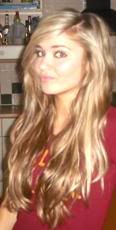We chose the genre of Psychological Thriller for our opening sequence, we wanted to make it very obvious to the audience that it was a thriller genre so we researched other thriller opening sequences and established the typical thriller conventions to use in our opening sequence. We used many different methods such as mise-en-scene, characters’, music, editing and camera work to create a thriller atmosphere. Some very conventional themes of thrillers are mystery, enigma and suspense all enticing the audience, making them think about it and wanting to watch more. We tried to include these key themes in our opening sequence.
Some typical thriller conventions are:
Young female victim – We have used this convention as a young girl has been trusted and left alone in someone else’s house babysitting their child and the child has disappeared which has panicked her as she will be blamed. Babysitting in itself could be seen as a thriller convention as many classic thriller films have used this theme eg. Halloween and When A Stranger Calls. She gets an anonymous phone call as well at the end which could be seen as another convention as it was used in When A Stranger Calls and Scream. Also unknown to her there is a man wearing a mask stalking her it seems so she seems the typical vulnerable naïve victim of a thriller film. Although she could also be seen as the hero as we see her character is still quite strong which is a small challenge to this convention. She’s in the light which shows she’s the good character.
Male villain – We have used this convention as we see a masked man standing at the window which is scary and as he is wearing a mask his identity is hidden making him seem dark and evil and creating a lot of mystery and enigma for the audience. It also builds a lot of suspense at the point where the audience see him as you think what’s going to happen to the babysitter and the child. He’s in the dark which shows he’s the bad character. Male villains are used in almost every thriller film, one good example would be Friday 13th.
Disturbing music – We used this as slow, scary and tense music creates a lot of suspense. It’s called ‘Off Centre’ from the website www.freeplaymusic.com. In our opening sequence, as the tension builds up as Zoe is trying to find the child the music gets louder and slightly faster adding to atmosphere. Also we used a music box which was playing in the child’s bedroom and it sounds really eery.
Dark mise-en-scene/lighting – We didn’t really use this convention as it didn’t work in our film to have dark lighting inside. The mise-en-scene was a typical house, homely and well lit, in a way this is worse as it was an everyday environment that people can relate to and could scare the audience more knowing things could go wrong in your own house. It was dark outside, so it was a good contrast being light inside and dark outside as it being at night added a much scarier atmosphere.
Danger signifiers – We used red signifiers such as red juice, red scarf to connote danger and blood and the feeling something bad has happened.
Slow/fast pace – We started off using a very slow pace creating suspense and when she hears the scream, we used cuts and loud music to fasten the pace to make it more dramatic.
Being watched – I think the feeling of being watched is quite a common theme in thrillers, we had a few shots that were similar to surveillance shots.
I think these two shots make the audience feel as if she’s being watched which creates a lot more fear. Also the high angle on the stairs looking down on her makes her seem more vulnerable.
One of our main inspirations for our opening sequence was the film Halloween (1978 Carpenter).
Halloween involves many of the same main themes of our opening sequence like babysitting alone, masks, stalking which all terrify audiences so we chose to include these themes as they have proved to work well in the past.
I think we created a lot of mystery in our film, here are some of the enigma codes we created…
What happened to Summer?
Who was the masked man and why was he there?
Does the masked man have anything to do with Summer’s disappearance?
Who was on the other end of the anonymous phone call at the end?
We followed Tzvetan Todorov’s theory of the classic narrative pattern in our opening sequence. His theory is…
Equilibrium --> Equilibrium disrupted --> Resolution --> Restored order --> New equilibrium
We did…
Equilibrium --> Equilibrium disrupted (No resolution as this would be the rest of the film)
The equilibrium was the young girl’s, Zoe’s, everyday routine just babysitting and the scream and the disappearance of the child disrupted the equilibrium straight away making the audience enthusiastic about the rest of the film. We used realtime in our opening sequence and didn’t use any flashbacks or cross cutting as we wanted to keep it simple and effective. We used all the classic continuity techniques such as shot-reverse-shot, match on action, cuts, 180 degree rule and the 30 degree rule.
I think our opening sequence is quite similar to the opening sequence of the film Scream (1996 Craven)
Similarities:
- Anonymous phone call
- Masked man
- Girl home alone



No comments:
Post a Comment